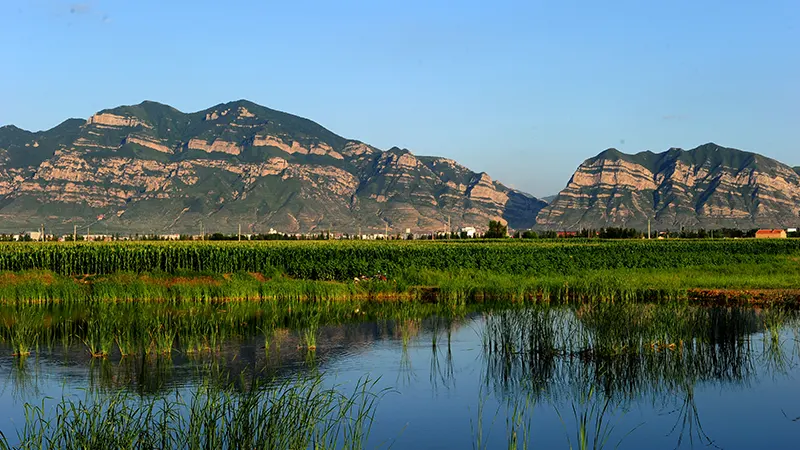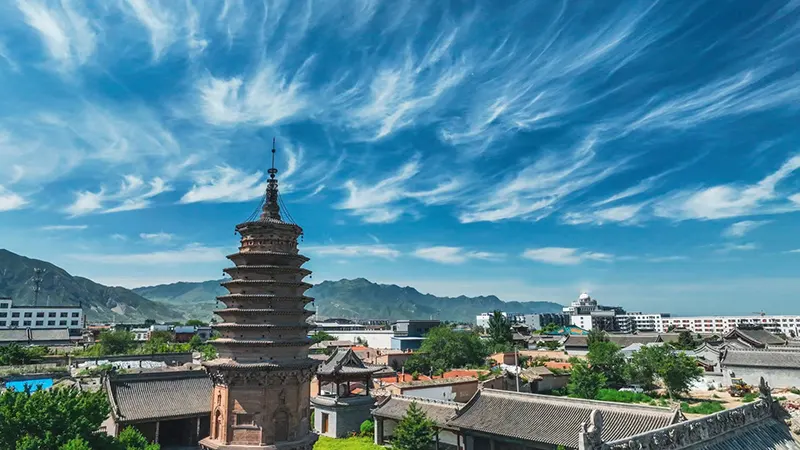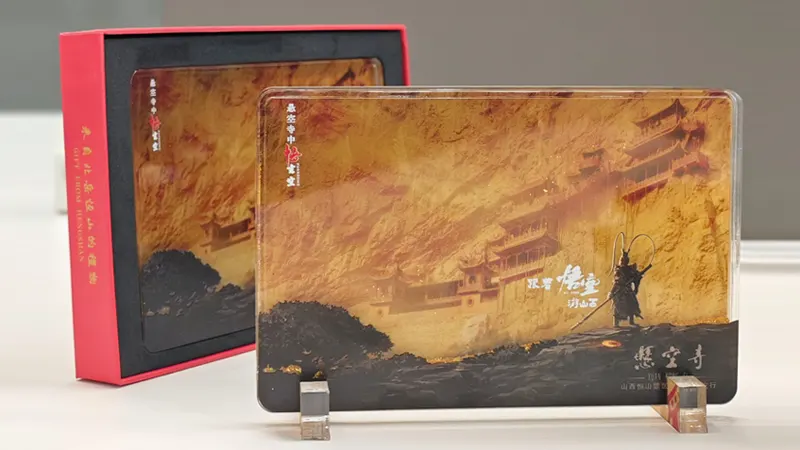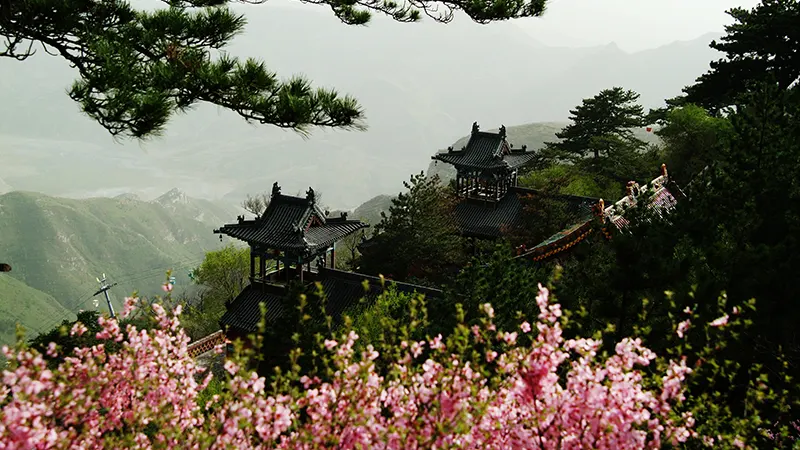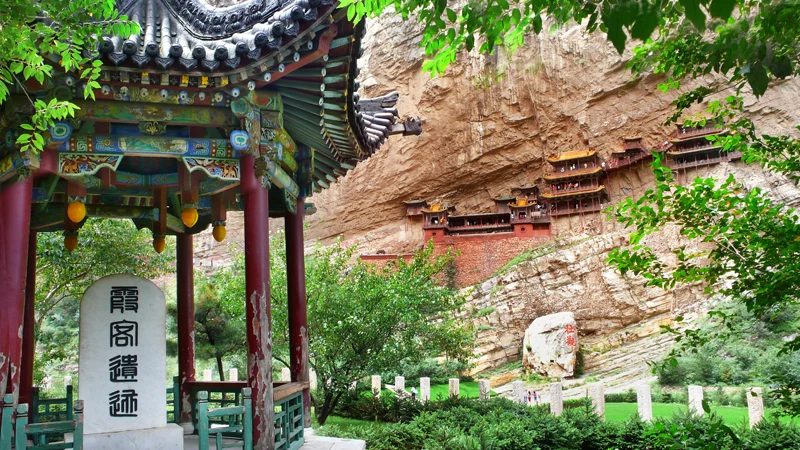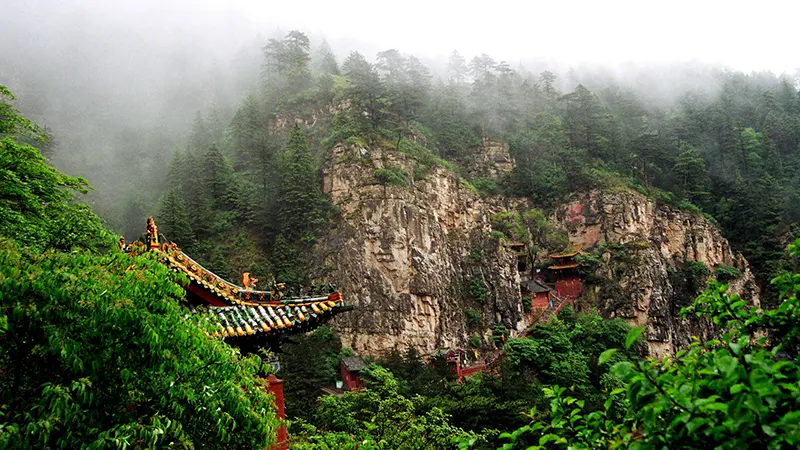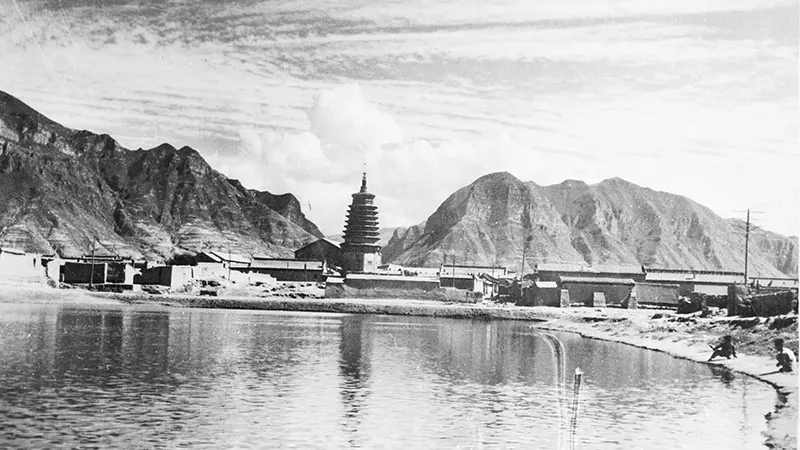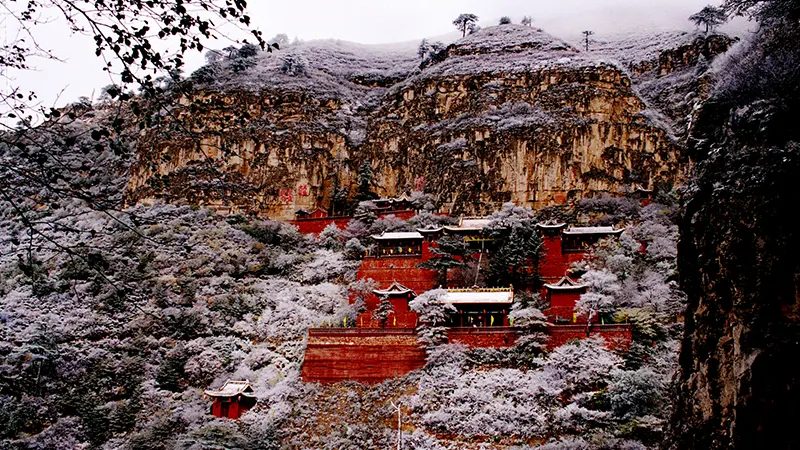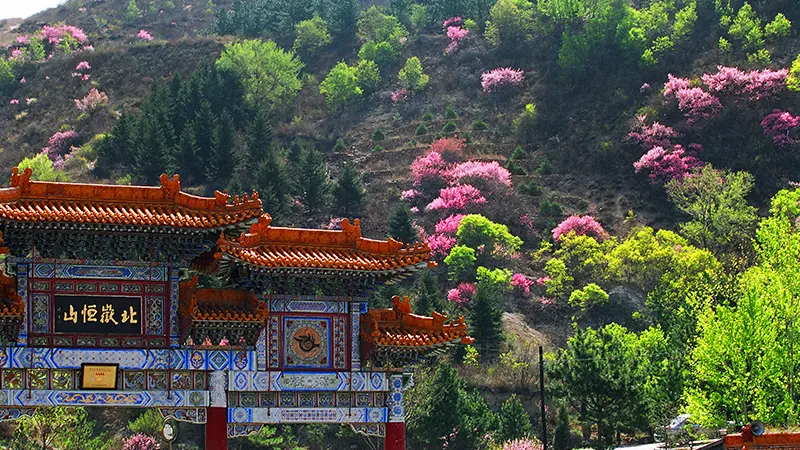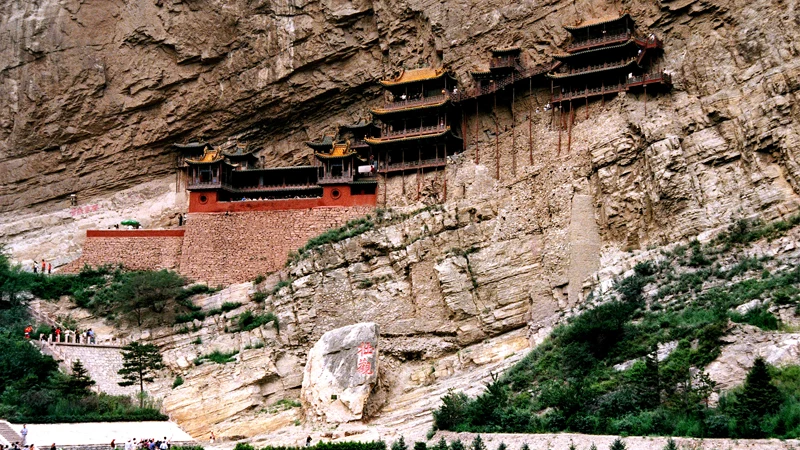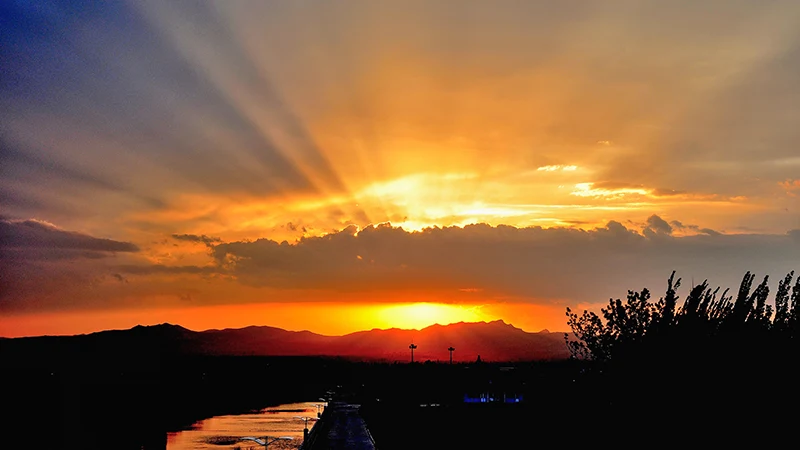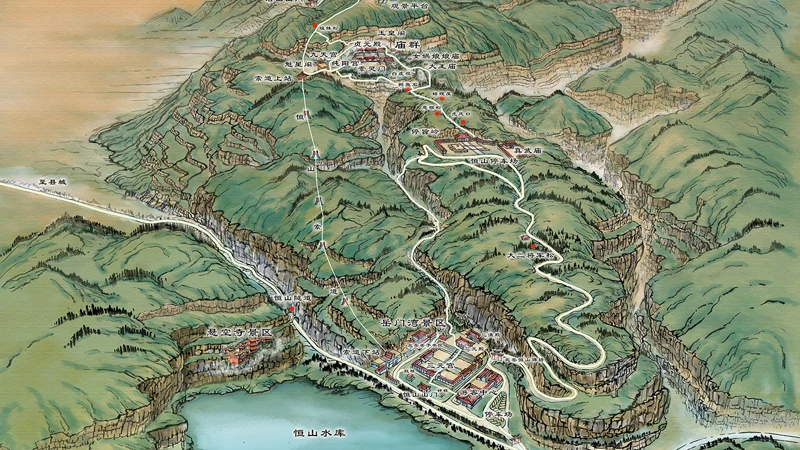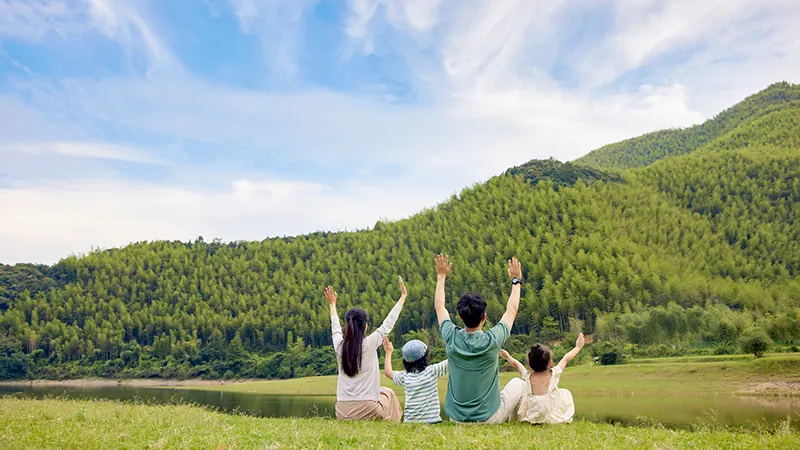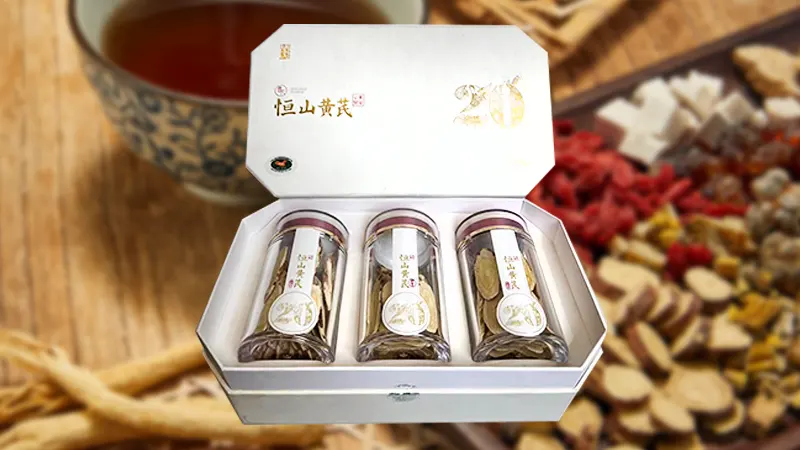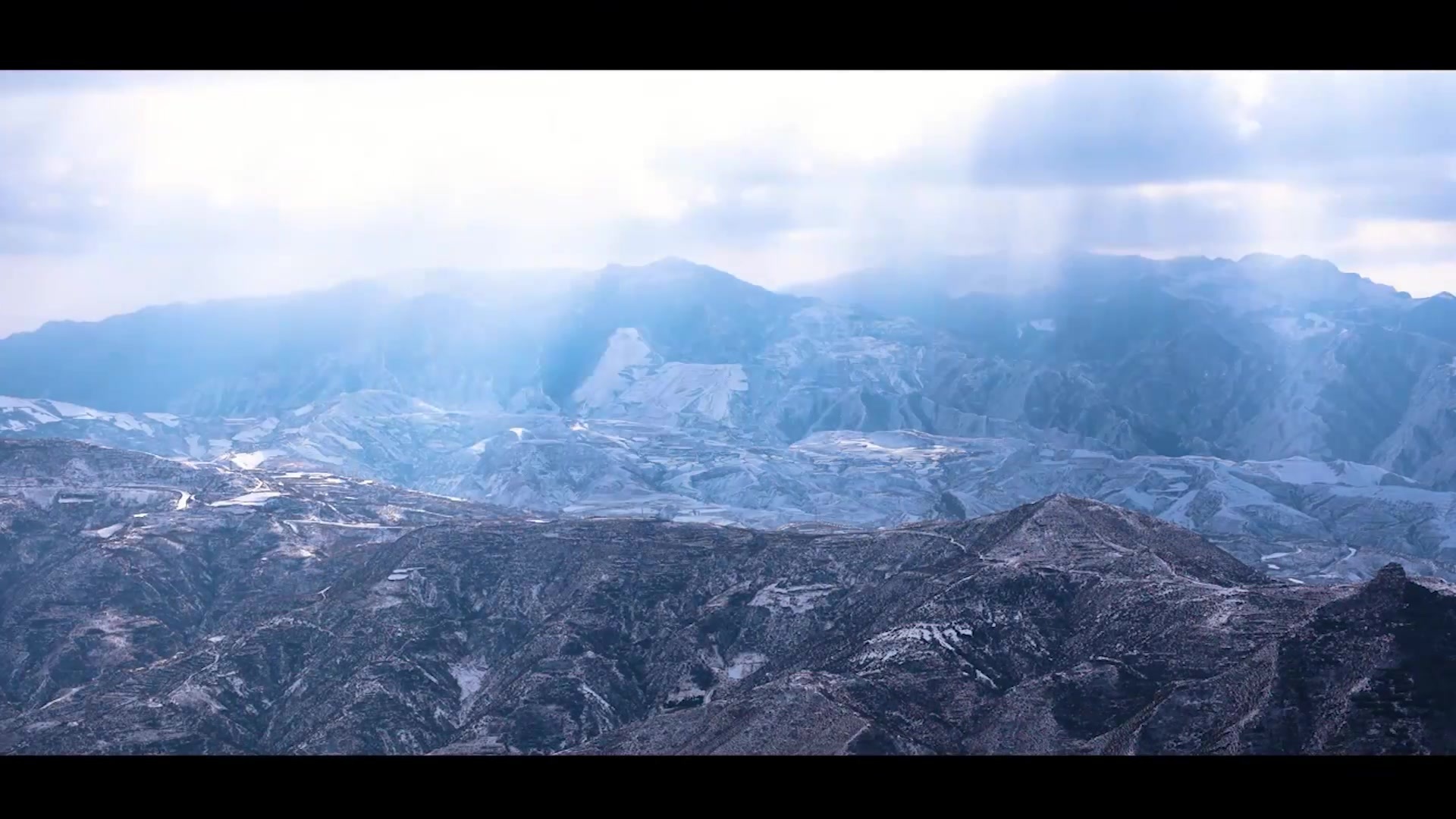Republic of China, Gao Hènián | 1914 Hengshan Mountain Travelogue
Publish Time:
2025-03-18 11:29
Source:
Gao Henuan traveled to Shanxi six times between the late Qing Dynasty and the early Republic of China. His first three trips during the late Qing Dynasty were undocumented; the last three were documented, but only the sixth trip, which included a visit to Hengshan Mountain and travels through Datong and Hunyuan, is detailed.
Editor's Note
Gao Hesheng traveled to Shanxi six times from the late Qing Dynasty to the early Republic of China. He kept no records of his first three trips during the late Qing Dynasty; records exist for the last three trips, but only the sixth trip, which included Hengshan Mountain and visits to Datong and Hunyuan, is detailed.
In April 1914 (lunar calendar), 43-year-old Gao Hesheng traveled to Beijing, where he visited many eminent monks and temples. Yuexia, a Buddhist master, came to Beijing from Wutai Mountain and repeatedly urged him to return south to help with the soon-to-be-established Huayan University in Shanghai. Gao Hesheng politely declined, stating: “I have been working tirelessly for two years in Shanghai promoting Buddhism. I feel entangled by worldly affairs, trapped in illusions, obsessed with fame and wealth, and harmed by the five desires. I am ashamed of my heavy karma and insufficient wisdom and spiritual strength; I fear I will be swayed by my circumstances. Since I am not yet enlightened, how can I enlighten others? Therefore, I have decided to return to the deep mountains to cultivate myself further. When the time and conditions are right, I will return to engage with the world.”
Bidding farewell to his companions, Gao Hesheng decided on his sixth journey to Shanxi. On April 17th, he departed from Beijing West Zhimian Train Station, staying briefly in Zhangjiakou for a day. On the 19th, he boarded a train from Zhangjiakou to Suiyuan, disembarking in Tianzhen County. On the 20th, he traveled by carriage to Datong via Luowenzhao and Zhoushizhuang; on the 27th, he departed for Hunyuan, entering the city and checking into an inn on the 28th. The next day, he began his journey to Hengshan Mountain. On May 1st, Gao Hesheng had an all-night discussion with Daoist Master Xiao Daocheng, the abbot of a temple on Hengshan Mountain, expressing his desire to cultivate himself further by staying in the Feishi Caves for a prolonged period. Master Xiao agreed but expressed concern about the hardship. Gao replied, “Hardship and the path are united; I am not afraid. Please arrange for five kilograms of wheat flour; I will stay for ten days as a trial.” On the 2nd, he moved into the Feishi Caves, subsisting daily on wild tea and noodles. After a fortnight, with his desires subdued, Gao Hesheng informed Master Xiao of his intention to leave Hengshan Mountain and travel to Wutai Mountain. On May 17th, he descended the mountain and returned to Hunyuan city; on the 18th, he departed Hunyuan, passing through Yingxian, Shanyin, and Yanmen Pass, before entering Wutai Mountain. This trip took place in the third year of the Republic of China, not long after the Qing Dynasty. The sights and experiences he encountered were much the same as at the end of the Qing Dynasty.
In April 1935, Gao Hesheng's book "Travelogue of Famous Mountains" was published by the Shanghai Buddhist Studies Publishing House. In August 2013, "Reading Materials of Republican Shanxi: Travel Collection" was published by the Sanjin Publishing House, including Gao Hesheng's diary of his sixth journey to Shanxi under the title "Hengshan Mountain and Wutai Mountain Travelogue." This article excerpts the parts of the "Hengshan Mountain and Wutai Mountain Travelogue" that describe Datong and Hunyuan, with a revised title.
Travelogues of modern figures visiting Hunyuan and Hengshan Mountain have always been a focus of this journal. We publish this article for our readers.
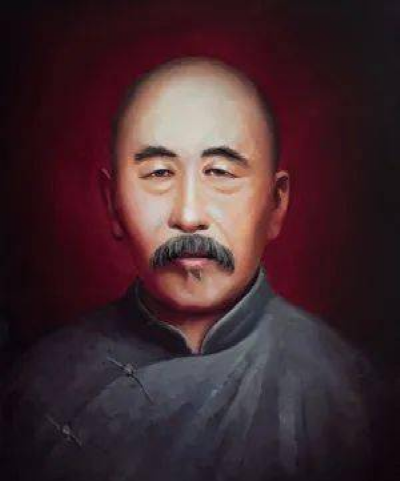
Gao Hesheng (1872—1962), a native of Xinghua, Jiangsu, was a renowned modern Buddhist layman and traveler.
From Guangxu's sixth year (1890) to the thirteenth year of the Republic of China (1924), over 35 years, he traveled tens of thousands of miles with only a staff and a straw hat, diligently visiting numerous places. It is considered miraculous, and he is known as the 'second Xu Xiake'.
Hengshan Mountain Travelogue
By Gao Hesheng
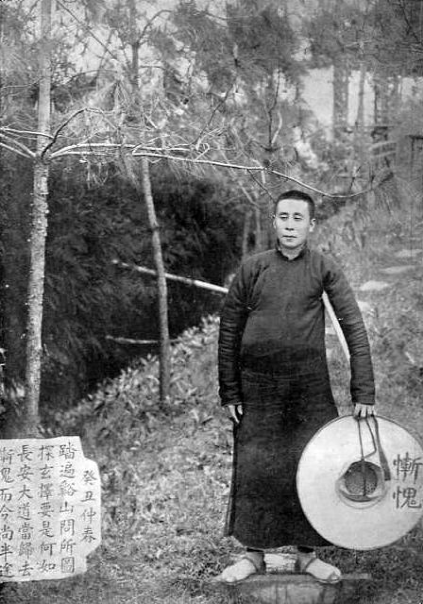
Gao Hesheng photographed during his travels
1913 (the year before his journey to Hengshan Mountain)
Journey to Datong
April 19th, Jia Yin year
I boarded the Zhangjiakou-Suiyuan train, passing Guo Leizhuang, Chaigoubao, Xiwanbao, Yongjiabao, and arriving at Tianzhen County, where I disembarked. After five li (approximately 2.5 kilometers), I arrived at the Guandi Temple in the city and visited Monk Jiti, staying there for a day. We were classmates at Chishan in the past, and now we meet again, sharing stories of our lives. He said: "The author is the mind, the receiver is the body. Greed, anger, delusion, and attachment cloud our true nature. Indulging in the five desires leads to falling into the three realms of suffering. If one can recognize their true nature, sin will cease, the mind will become empty, and they will escape the net of suffering." His practice is profound and his days are not wasted; he is truly admirable.
April 20th
I traveled by carriage through Luowenzhao, Yanggao, Zhoushizhuang, and other places, arriving at Datong Prefecture and staying at Baishi Temple in the West Gate. The abbot, Nengyou, still has firm faith.
April 21st
The abbot and I visited Yungang Mountain together. Ten li (approximately 5 kilometers) away is Wangyun Temple, ten li further is Guanyin Temple, and sixteen li (approximately 8 kilometers) is Yungang Mountain. The mountain peaks are not high but stretch along a long stream. The temples are famous for their stone Buddha statues, white as jade. The Buddha statues in the caves are several zhang (approximately 3-4 meters) high, majestic and impressive. The temple has three stories, with Buddha statues on all four sides; the top has statues of the celestial beings who guide people to Buddhahood, and the lower level is Guanyin Hall. The six large caves in the west are carved with depictions of the Eight Devas, Celestial Maidens scattering flowers, and Buddhas surrounding them. There are many small caves, all Tang Dynasty carvings. All the stone Buddhas are carved from the mountain itself. They represent the glory of ancient Chinese art and history. However, there is no protection now, and many stone Buddhas have been broken by ignorant people; this is truly regrettable. I persuaded Abbot Guangyu to maintain them and suggested building a stone wall to protect the Yungang stone carvings; this would be a great contribution. After lunch, I returned to Datong.
April 22nd
I entered the city and paid respects at Huayan Temple, where there are five large Buddha statues in the main hall. During the Liao Dynasty, six bronze statues and five stone Buddha statues were erected.
April 23rd
I went outside the pass. Thirty li (approximately 15 kilometers) away is Shuipo Village, with a Guandi Temple where I visited Zhengwu. His Chan insights are vivid and his words profound; such skill takes many years to cultivate. There is also a school there; the principal, Mr. Yan Jianxun, is quite fond of Daoism, saying: "Thirty-six thousand days in a hundred years, not half a day's leisure for a monk. Confused when we arrive, sad when we leave, we simply walk through this world."" It is quite a sigh. Alas! To simply walk through the world is to waste one's life, to be pitied by the Tathagata. However, today's people indulge their lust, anger, greed and delusion. They use deceit and trickery to the utmost, until everything is gone. Only karma remains, leading to falling into the evil paths and suffering endlessly. Even to simply walk through the world without achieving anything is impossible; it's truly sad.
April 24th
In the afternoon, I returned to Datong. The next morning, I went to Xingguo Temple outside the South Gate and listened to a lecture on the Lotus Sutra. The lecturer is an old friend; we listened together to lectures at Guiyuan Temple in Hanyang, Hubei, in the 30th year of Guangxu, and now we meet again here.
April 25th
A trip to Jiulong. In front of the screen wall is a pool, named Jiulong Shenchi (Nine Dragon Divine Pool). In front of the pool is a pavilion with the words "Dragon Gate" on it. There is a stele that reads "Jiulong's Remains," recording the miraculous events of the dragon god. We went to Yuantong Temple to visit the Venerable Honda, who said, "Possessing complete pure precepts, constantly practicing the Brahma conduct. With an immobile body and mind, gradually attaining Prajna." Venerable Kailian said, "Cultivating the body with compassion, skillfully entering Buddhist wisdom. Comprehending great wisdom, arriving at the other shore." Mr. Qi said, "The talks of the two Venerables have deeply penetrated the samadhi of liberation." Mr. Qi Zhongwen and other gentlemen all wished to promote Buddhism and transform beings. After a pleasant conversation, we returned to Baiyi Temple. That night, a Mr. Li from Licheng, Shandong, whose courtesy name is Fosheng, came to talk the whole night through.
April 26
Venerable Kailian and Venerable Miaoshi came to chat. Mr. Li Fosheng invited us to have lunch at the Upper Huayan Temple, so we went into the city together. We strolled around the ancient imperial palace, where there is a Yan Zhen Terrace, built with glazed nine dragons. It is said that Emperor Wen of the Northern Wei Dynasty established his capital here. Passing through the ancient Louda Street and the Four Archways, the bell tower is majestic, with a plaque that reads "Sound penetrating the clouds, its voice reaching far and wide." At the Upper Huayan Temple, two Venerables joined us for the meal. They discussed a passage from the scriptures that said: "All dharmas are born from mind, all appear in the mind. All karmic worlds and dust particles are formed by the mind, and from this form, they emanate. Therefore, natural disasters and human calamities are all created by one's own mind." Director Wei Zhongliang and Mr. Zhang Lisheng said, "Discarding selfish desires allows one to govern public affairs, then one can study Buddhism; eliminating self-opinion allows one to listen to others, then one can listen to the scriptures." They also said: "Promoting morality with Buddhism is most appropriate." After a long conversation, we finished our meal, took photos, and dispersed.
Hunyuan Trip
April 27
We said goodbye. After walking five li, we reached the Hunyuan River, commonly known as the Imperial River, and crossed at Sha Ling Ferry. Twenty-five li to Xin Zhuang, fifteen li to Changnan Village, fifteen li to the Sanggan River, and crossed at Gujia Bridge. Fifteen li into the mountain pass, fifteen li to Tuopu for lodging.
April 28
Uphill. Fifteen li to Sanling, fifteen li to Erling, twelve li to Tuchiao Pu, ten li to Hunyuan Prefecture, entered the city and checked into an inn. We visited Zhenwu Palace on the north city wall; the city has no north gate. Yong'an Temple is a large temple with glazed tile halls, elaborately carved and majestic, but there are few monks, overgrown with grass in the courtyard, the Buddhist way is desolate. The Yue Temple is also dilapidated.
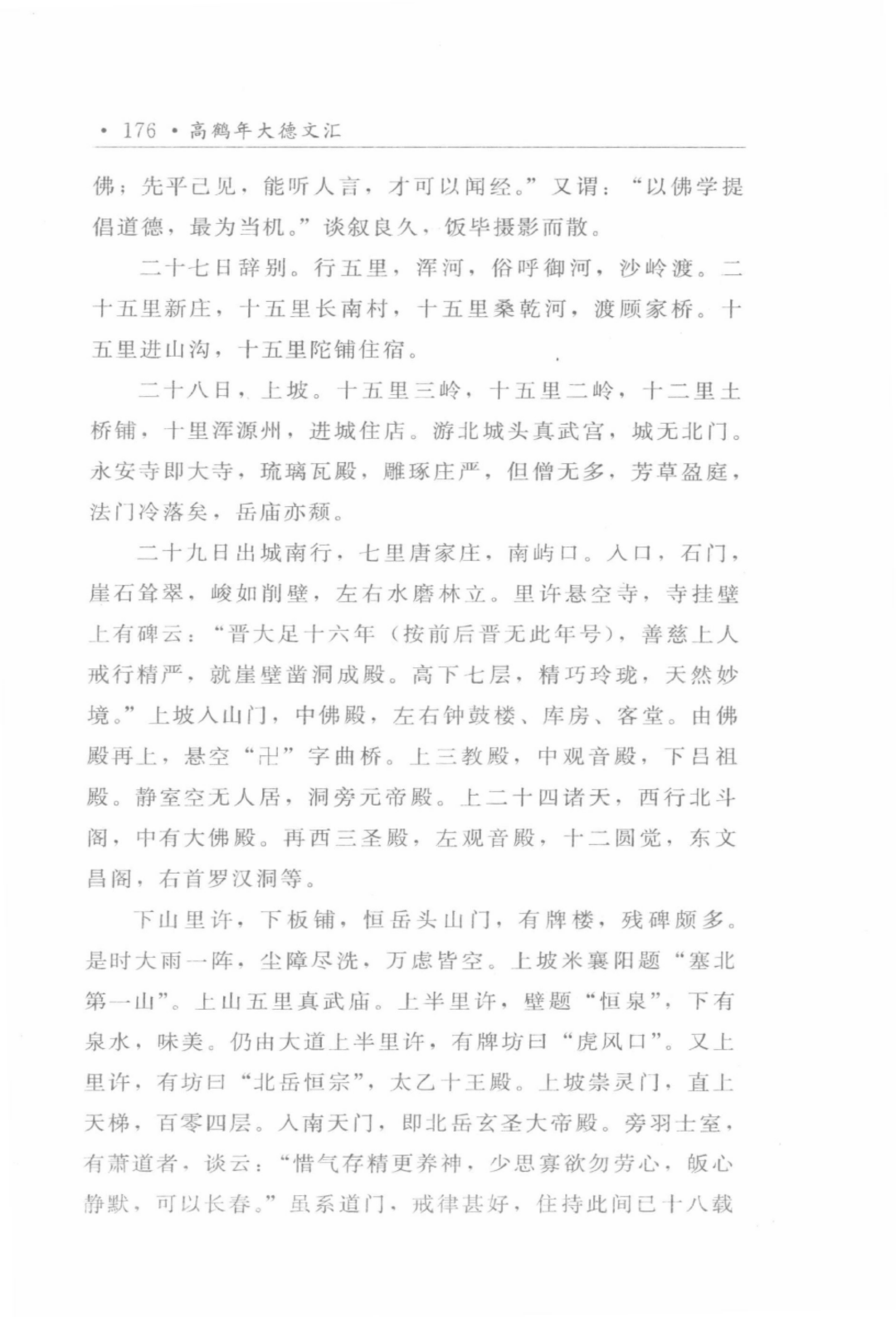
Inside Pages of "Collection of Essays by the Great Virtuous Man Gao Huonian"
April 29
Leaving the city and heading south, seven li to Tangjia Village, then Nanyu Kou. Entering, there is a stone gate, the cliff rocks rise verdantly, steep as a cut wall, with water mills lined up on both sides. About a li away is the Hanging Temple. A stele in the temple on the cliff reads, "In the sixteenth year of Dafu of Jin Dynasty (Han note: should be a mistake for Dading of Jin Dynasty), the virtuous Venerable Shan Ci, with rigorous precepts and practice, carved caves into the cliff to create a hall. Seven stories high, exquisitely crafted, a natural wonderland." Going uphill to the mountain gate, in the middle is the Buddha Hall, and on the sides are the bell and drum towers, storerooms, and guest halls. From the Buddha Hall, one ascends to the hanging "卍" shaped bridge. Above is the Three Teach Hall, in the middle is the Guanyin Hall, and below is the Lü Zu Hall. The quiet room is empty and uninhabited, next to the cave is the Yuandi Hall. Above are the Twenty-Four Devas, going west is the Beidou Pavilion, which contains a large Buddha Hall. Further west is the Three Saints Hall, to the left is the Guanyin Hall, Twelve Rounds of Enlightenment, to the east is the Wenchang Pavilion, and to the right is the Luo Yi Cave, and so on.
Going downhill for about a li, to Xia Banpu, the mountain gate of Hengyue, where there is a memorial archway and many damaged steles. At that time, a sudden heavy rain washed away all the dust, emptying all worries. Going uphill, there is Mi Xiangyang's inscription, "The Number One Mountain in North China." Five li up the mountain is the Zhenwu Temple. Half a li further up, there is an inscription on the wall, "Eternal Spring," with a spring below, with delicious water. Another half li up the main road is a memorial archway called "Tiger Wind Pass." Another li up, is an archway that reads "Mount Heng, the Northern Peak," the Taishang Ten Kings Hall. Going uphill to Chongling Gate, straight up the Heavenly Ladder, one hundred and four layers. Entering the South Heavenly Gate, immediately is the Hall of the Great Sage Xuan Sheng of Northern Mount Heng. Beside it is a Daoist room, with Daoist Xiao, who said, "Cherishing qi, preserving essence, and cultivating the spirit. Thinking less, desiring less, not tiring the mind. Returning to the heart, quiet and silent, one can achieve longevity." Although of the Daoist school, his precepts are very good. He has been residing here for eighteen years.
At that time, a devout pilgrim chanting the Four-Legged Song by Yang Shen'an: "A thatched hut is my dwelling, ornate rafters I do not dwell in, only seeking that it can shield me from wind and rain, I do not desire a tall building, only that it does not leak suffices." Hearing this is sufficient to awaken the infatuated.
Going up more than a hundred steps, the Imperial Stele Pavilion, which reads "Transformation Endures Through Ages." Paying respects at the Jade Emperor Pavilion and the Meeting Fairy Palace, the gate plaque reads "Southern View of the Four Mountains," in the middle is the Three Stars of Blessing, Wealth and Longevity, on both sides are immortals. Above is a cliff rising thousands of feet high, on the east wall is the inscription "Heaven Opens Spiritual Wonder," and on the Qinggai Terrace is a stone chessboard. Returning downhill by the original path, staying in the east building below the main hall.
May 1
Passing through the gate, heading east to Baiyun Lingxu (White Cloud Spiritual Cave). Going downhill, to Huanyuan Cave and Feishi Grottoes, in front of which are pavilions and many Ming Dynasty inscriptions. Passing various temples of the Nine Heavens Holy Mother, all uninhabited, returning to the main hall.
That night, talking with Xiao, he desired to live in Feishi Grottoes for a long time. Old Xiao agreed, saying, "I fear it is too hard." I replied, "Hardship is in harmony with the Dao, I am not afraid at all. Please prepare five jin of wheat flour, let me try living there for ten days first.
May 2
Moved to Feishi Grottoes, eating one meal a day with wild tea and flour.
Throughout the day and night, the wild heart gradually calmed, only feeling that the spiritual energy of the mountain was not as good as Wutai Mountain.
After half a month, Old Xiao came to visit, so I informed him that I was going to Wutai Mountain.
May 17
Down the mountain, returning to Hunyuan Prefecture, and then to Qingshan Mountain to spend the summer.
Hengshan Mountain Temple Abbot:
-
From the late Qing Dynasty to the early Republic of China, the abbot of Hengshan Mountain Temple was Xiao Daocheng.
-
Around 1930, Xiao Daocheng passed away; Abbot Gao Yuanqing took over as the abbot of Hengshan Mountain Temple.
-
In 1947, Gao Yuanqing left the mountain; Abbot Dong Yongli took over as the abbot of Hengshan Mountain Temple, until the founding of New China.
May 18
Leaving Hunyuan Prefecture, ten li to Guojiazhuang, ten li to Xinzhuang, fifteen li to Xifangcheng, twenty li to Luozhuang, twenty-five li to Zhengziliang, and ten li to Yingzhou. There is a tower temple, called Fogong Temple. Inside is a large tower, entirely constructed of wood, with seven external levels and nine internal stories. Monks say its circumference is approximately forty zhang and its height thirty-six zhang. A plaque reads “Towering above the clouds,” another reads “Suddenly appearing in the blue sky,” and a plaque before the gate reads “A wonder of the world.” Built during the Liao and Jin dynasties, it should be an ancient county. Climbing it for a distant view, the mountains, rivers, and people appear as if one were standing in a fairyland. It is also known as the Jin City Wild Goose Pagoda; local people say that it, along with the Cangzhou Lion and the Yingzhou Pagoda, are all famous throughout China. The head monk, inviting the esteemed gentlemen Cai Chen and Su Runquan, among others, for a discussion, said: “Knowing when to stop can eliminate delusion; cultivating the Way is truly the solution to save the world.”
…
Originally published in "Records of Famous Mountain Travels"
Reprinted in "Republic of China Shanxi Reader: Travel Collection"
Title added by the editor
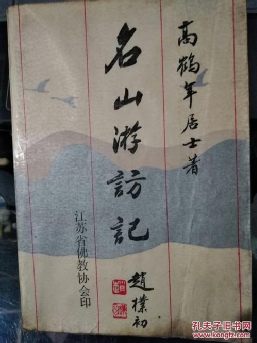
Cover of the enhanced edition of "Records of Famous Mountain Visits"
Published January 2000 by Religious Culture Press
Proofreader: Xue Fang
Editor: Xing Xuelin
Author's Introduction
Gao Henen (1872—1962), courtesy name Hengsong, pseudonyms Yinchen, Ye Ren, Zhongnan Shizhe, Yunshui Daoren, Yunxi Daoren, was born in Xinghua, Jiangsu, originally from Guichi, Anhui. He was a renowned modern Buddhist layman, philanthropist, and traveler.
From the age of nineteen, he embarked on a long journey. Over many years, he toured famous mountains and temples, visited high monks in various places, and visited temples along the way, traversing the famous mountains and great rivers of his motherland. He lived a simple and frugal life, building huts in many places throughout the country, living with the cool breeze and moonlight as companions, calmly cultivating his truth, practicing meditation, eating wild fruits when hungry, and drinking stream water when thirsty. From Guangxu 6 (1890) to the Republic of China 13 (1924), for 35 years, with a staff and a straw hat, he traveled tens of thousands of li, traveling lightly, and making arduous visits—a truly remarkable feat, and he was known as "the second Xu Xiake." His observations along the way were compiled into "Records of Famous Mountain Visits."
Gao Henen was a devout Buddhist layman, whose mission was to save all beings. From the age of 25, he actively participated in social charity and relief work. In the 19 years from age 55 to 73, he almost annually participated in drought and flood relief activities, leaving his footprints throughout Shanxi, Xuhua, Pingjin, and Hunan, Sichuan, Shaanxi, Henan, Gansu and other provinces. He converted his home into a home for elderly women, sheltering impoverished women to provide for their old age. In 1935, he was elected a director of the Shanghai City Yi Zhenghui (Disaster Relief Association). In 1953, at the age of 82, he was invited to attend the founding meeting of the China Buddhist Association in Beijing, where he was greeted by Zhao Puchu and other eminent figures at Beijing Station and elected a director of the association. In 1954, he was elected as a representative of the Jiangsu Provincial People's Congress. He passed away in February 1962 at the age of 91, and his ashes were buried in the mountains southwest of Qionglong Mountain, Suzhou.
His works include "Records of Famous Mountain Visits," "Records of Famous Mountain Visits: Poems," "Records of Disaster Relief and Verification," "Sixty Years of Austere Practice by Master Yingguang," "Returning from the Mountains," and "Collection of Works by the Eminent Gao Henen."
Keywords:
Hengshan
Related News
Tourists visiting Hengshan Mountain, in addition to appreciating the magnificent natural landscape of Hengshan Mountain, are more interested in learning about the profound cultural heritage of the Northern Mountain.
Republic of China hemp mat treasure | Guiyou (1933) Deng Hengyue Ji (with poems and texts)
In today's ancient city of Hunyuan, when discussing well-preserved ancient residences, one must mention the "Ma Family Courtyard." The original owner, Ma Xi Zhen, has also gained attention, as if the person is known because of their residence.


